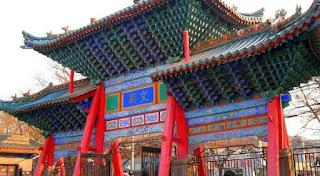Located on Zhongshan Street, in Xianyang City, the Xianyang Museum is one of the famous museums in China. It mainly has collections of the Qin (221 BC to 206 BC) and Han Dynasty (206 BC to 9 AD) eras. Xianyang was the capital city of the Qin Empire. The Qin Dynasty controlled the first large empire in the land, and the boundaries established during the Qin Empire were maintained and enlarged upon by the Western Han Empire. Originally a Confucian Temple, it was opened to the public in 1962 after reconstruction and expansion.
The exhibits contain some of the best artifacts that have been discovered of that time in the various large imperial tombs and ruins around Xianyang. The museum covers about 1,100 square meters or about a quarter of an acre. The Han Dynasty used it as a mausoleum area to bury people. The ticket price is inexpensive, but the nine halls in the museum house real treasures. Among the rich cultural relics, the 3,000 Painted Terra - Cotta Warriors and Horses of the Western Han Dynasty (206BC - 24AD) are the most famous.
The nine exhibition halls are divided into four parts as follows:
Exhibition halls one, two and three mainly show the historical cultural relics of the Qin Dynasty. This includes all of the records indicating that Qin Shi Huang,the first emperor of the Qin Dynasty, was responsible for the unification of China. These halls also display various fine potteries, jade articles and the famous Qin bricks. With a hard texture, these precious bricks were carved with many elaborate flower patterns.
The fourth exhibition hall displays the paintings and calligraphies of contemporary famous persons.
The fifth and sixth exhibition halls show the world famous Painted Terra - Cotta Warriors and Horses of the Western Han Dynasty. The 3,000 figures comprised the great image of the royal guards of the Western Han Dynasty. This troop, full of power and grandeur, exemplifies the strength of the military power of the Western Han Dynasty. Displayed in Western Europe, North America, Japan and Singapore, this troop contributed much to carry forward the civilization of ancient China and promote the intercommunion between home and abroad.
The seventh, eighth and ninth contain the biggest sitting bronze Buddha of the Ming Dynasty (1368-1644) in China as well as religion cultural relics.
For more information, please visit www.top-chinatour.com





No comments:
Post a Comment